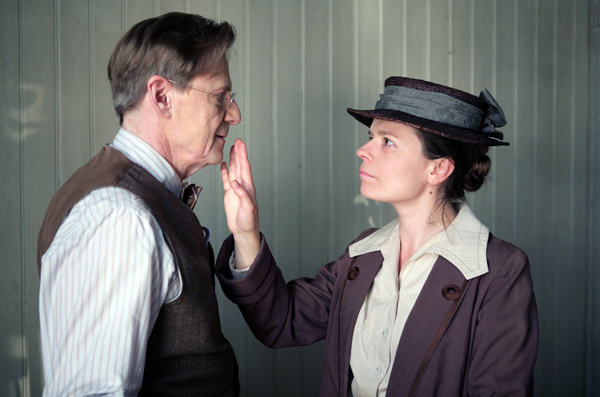|
Reviews of Recent Independent, Foreign, & Documentary Films in Theaters and DVD/Home Video

EVERLASTING MOMENTS Everlasting Moments is a rare cinematic look at working-class life in the first decades of the 20th century from a woman’s perspective, and a rarer look at how the new technology of photography democratized artistic expression. Swedish director Jan Troell has been known overseas mostly for his 1970’s sagas The Emigrants and The New Land about Swedes leaving their country for America in the 19th century. Through the eyes of his wife’s great-aunt Maja, they have lovingly crafted a narrower domestic saga about those who stayed behind, based on extensive interviews conducted up to Maja’s death at the age of 91. A teenaged Maja (Callin Öhrvall) narrates the hard life of her mother Maria (Maria Heiskanen), a devout woman with few options in a rough marriage to the hard-working and hard-drinking Sigge (Mikael Persbrandt). With frequent pregnancies and constant money worries, Maria’s life seems bounded dawn through night by exhausting chores and children, with her husband behaving like the biggest one, until she remembers a camera she won in a lottery. Venturing into a photographic studio initially to sell it, her bright look and questions instead intrigue the proprietor Mr. Pedersen (Jesper Christensen) into convincing her to learn how to use it. The proscribed boundaries of her life provide unusual intimacy for her to capture her environment—her pets, neighbors, and family. Her subjects, particularly her women friends, are proud to be visually remembered through the photographs, while Maria gains confidence (and crucial time to herself) and the bonus of garnering some side income. (A decade ago, Sandra Goldbacher’s The Governess also saw the new art of photography as empowering to a woman but got more distracted by sex than creative expression.) So, of course, Maja’s violent husband is suspicious and feels threatened, as much by her burgeoning independence as by Pedersen’s encouragement of her hobby that she clearly loves (as well as by Pedersen’s attentions). Though the portrayal of Sigge comes close to being the usual womanizer and drunken wife abuser, his struggles to provide for his children by undertaking any manual labor that could utilize his great size and strength are sympathetically portrayed. The slowly passing years are indicated more by on-screen dates and the arrival of more babies, cars, and Charlie Chaplin movies than aging make-up. Overall, the details of daily life on the edge of poverty feel historically accurate.
But regardless of the truth of her episodic story, as a
film, Maria’s continual victimization at the hands of her husband is
frustrating to keep watching. (Her family and the church insist she stay
loyal to him, even after his egregious behavior spills out publicly.)
She, and the audience, has only intermittent respites when she looks
through the lens and delights in her completed portraits. Ironically,
her family’s happy ending is less about recognition for her achievements
than her husband getting a steady income for her to have a dark room of
her own. But as a tribute, this film overall restores some balance to her life,
and vividly brings to life a woman’s point of view from the past not
often seen. Nora Lee Mandel
|

